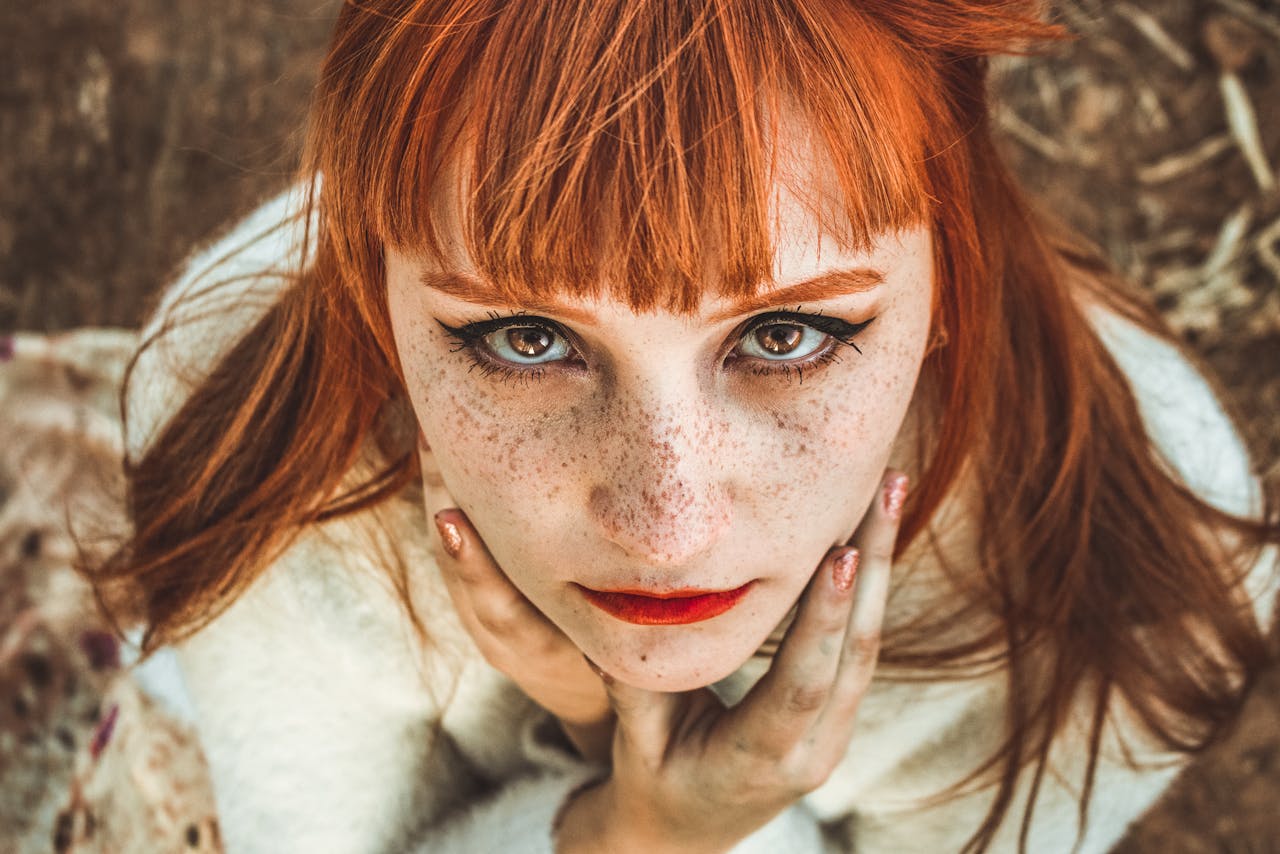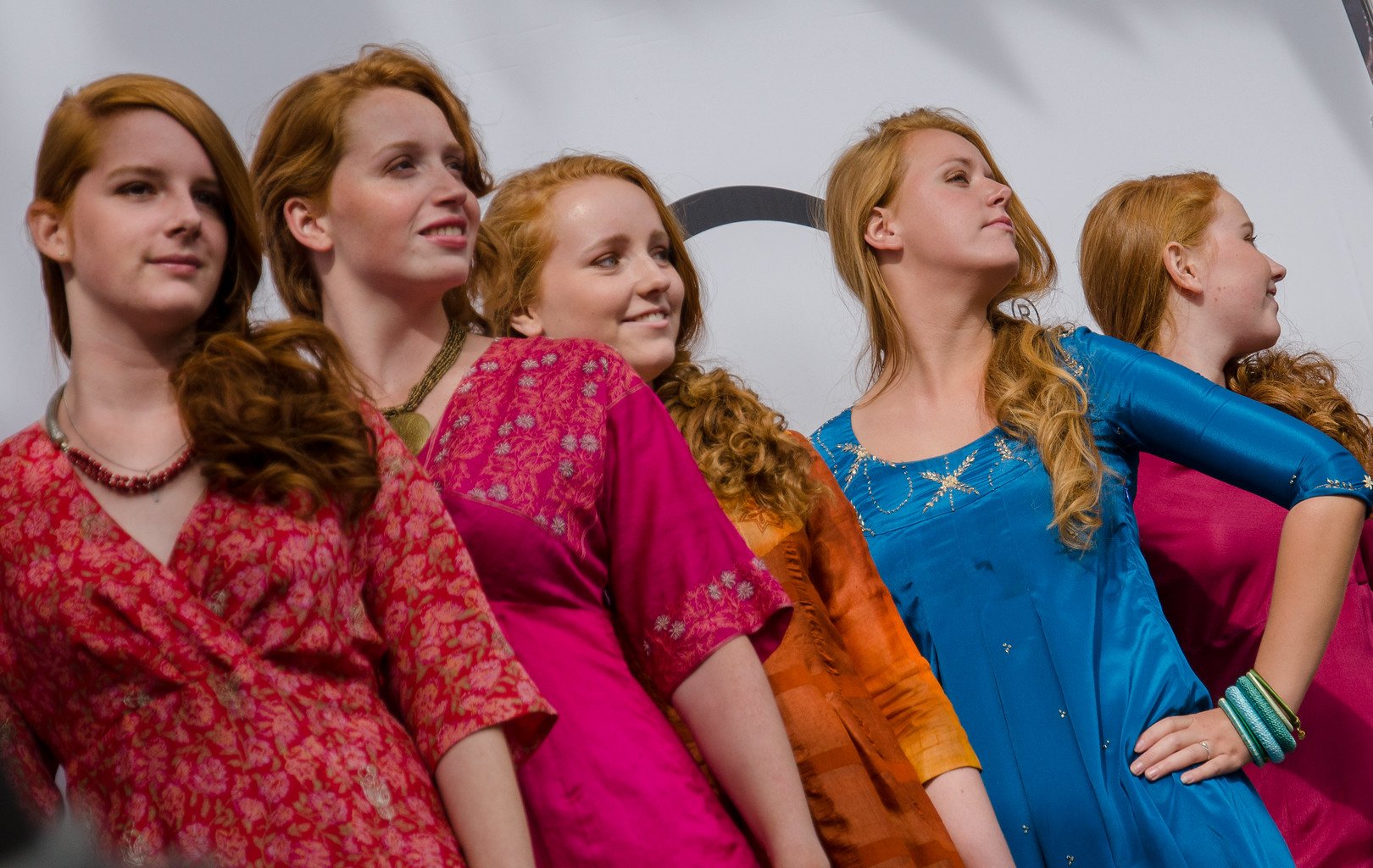Redheads are special, according to science
Redheads are more than just their hair—their unique genetics give them many fascinating traits that distinguish them from the rest. They have also played significant roles in various societies throughout history. Click next for some mind-blowing facts you didn't know about redheads.

Redheads have a high tolerance for pain
People with red hair can tolerate more pain due to a specific gene mutation that impacts their pain receptors. This makes them less responsive to certain types of pain, especially thermal pain, in comparison to individuals without red hair.
Redheads are common in North and West Europe
Red hair is more common in individuals with Northern and Western European ancestry, particularly in Scotland, Ireland, and Norway, due to the prevalence of the MC1R gene mutation. Natural selection also played a role in the high occurrence.
Redheads need higher doses of anesthesia
Individuals with red hair have a gene mutation that impacts pigmentation and anesthesia reactions. Research shows they may need higher doses for sedation and pain relief due to resistance. Anesthesiologists must adjust procedures for their safety.
Redheads are extremely rare
Red hair that occurs naturally is extremely uncommon, existing in just 2% of the worldwide population. The uncommonness is caused by the fact that both parents must pass on the recessive MC1R gene for it to be expressed.
Redheads are very prevalent in Scotland
Approximately 13% of Scotland's population have natural red hair, the highest globally. Genetic factors and cultural influences contribute to this prevalence.
 Philip Romano, CC BY-SA 4.0, Wikimedia Commons
Philip Romano, CC BY-SA 4.0, Wikimedia Commons
Redheads were prized in ancient Rome
Red-haired slaves were valued in ancient Rome for their perceived luck and special abilities. This belief stemmed from red hair's rarity and association with gods. They were especially popular with wealthy Romans.
 Eddy Van 3000, CC BY-SA 2.0, Wikimedia Commons
Eddy Van 3000, CC BY-SA 2.0, Wikimedia Commons
Redheads have fewer hair strands than blondes
Individuals with red hair typically have around 90,000 hair strands, while blondes have around 140,000 strands. Variations in hair density are influenced by pigmentation and hair structure.
Redheads don't get grey hairs with age
Red hair doesn't turn grey with age like other hair colors do. The pigment pheomelanin fades over time, causing red hair to gradually lighten to a coppery shade before turning white or silver.
 Simplyred Ltd, CC BY-SA 2.5, Wikimedia Commons
Simplyred Ltd, CC BY-SA 2.5, Wikimedia Commons
Redheads are celebrated in the Netherlands
The annually-held Redhead Day in the Netherlands celebrates red-haired individuals, promoting unity and challenging stereotypes. Gathering in Breda, the event includes group photos, cultural displays, and social activities, attracting thousands of participants.
Redheads tend to have paler skin and freckles
Red hair, fair skin, and freckles are commonly associated due to genetic factors affecting melanin production. The MC1R gene mutation leads to higher pheomelanin levels and lower eumelanin levels, causing paler skin and freckles.
Redheads were sacrificed as offerings in ancient Egypt
Ancient Egyptians associated red-haired individuals with offerings to Osiris, the deity of the underworld and afterlife. Red hair was considered unique and possibly signified a spiritual connection, leading to its involvement in ceremonies and sacrifices.
Redheads can make their own vitamin D
Redheads produce more vitamin D in dim lighting due to a specific gene mutation linked to their hair color. This adaptation helps them maintain strong bones and reduces the risk of osteoporosis.
Redheads are feared by gingerphobics
"Gingerphobia" is fear or dislike of redheads, originating from the term "ginger." Prejudice, known as "gingerism," towards redheads can manifest as teasing, bullying, or stereotyping, requiring confrontation and acceptance.
Redheads with blue eyes are the rarest of all
Red hair and blue eyes is a rare combination that creates a visually striking look. This unusual pairing of characteristics is uncommon is seen as special.
Redheads have a harder time dyeing their hair
Dyeing red hair is challenging due to its natural thickness, roughness, and unique pigments like pheomelanin. Red hair requires specific methods, multiple appointments, and more dye to achieve desired hues. Regular touch-ups are needed to maintain color brightness.
Redheads are more likely to be left-handed
Redheads are more likely to be left-handed compared to people with different hair colors. Researchers are still not fully sure about the reasons for this connection, and more studies still need to be conducted.
Redheads may be connected by lineage to Adam's first wife
Lilith, often depicted with red hair, is a figure in Jewish legend believed to have been Adam's first wife before Eve. Some interpretations see her as rejecting Adam, associating her with demons.
Redheads were thought to be supernatural in ancient Greece
Red hair in Ancient Greece was linked to supernatural beliefs like turning into vampires because of its rareness. Greek myths depicted vampires with red hair and eyes, possibly influencing the perception of redheads as having similar characteristics.
Redheads were studied using animal models
Researchers have utilized pigs and birds as animal models to delve into the genetic and physiological factors linked to red hair in humans. By studying the genetic foundations of hair color diversity in these animals, researchers gain crucial insights into human red hair genetics.
Redheads go way, way back
"Redhead" has been used for centuries, as far back as 1510. It was a valid and accepted descriptor for people with red or reddish hair, as it is today.
Redheads are the inspo for the names of British islands
Many British Isles last names reflect a connection to red hair, stemming from Old English or Gaelic terms. Names like "Reed" or "Russell" signify red, while "Flynn" and "Rowan" also connote red hair.
Redheads come in many different shades of red
Red hair comes in a variety of shades, from bright crimson to dark burgundy or auburn, influenced by genetics, environment, and pigmentation. Shades may also include hints of copper, gold, or brown.
Redheads came from cats, according to Mark Twain
Mark Twain humorously proposed redheads descended from cats, highlighting their unique qualities in contrast to ape ancestry. Obviously, there is no scientific basis supporting his statements.
Redheads have a higher risk of melanoma
Redheads have a higher likelihood of developing skin cancer due to their MC1R gene, which can also lead to more severe brain illnesses like Parkinson's disease, according to scientists.
Redheads can be "honorary" due to a protein defect
A lack of protein in rare cases can cause hair color changes, like dark hair turning red. Adequate protein is crucial for hair growth and maintenance, and severe deficiency can disrupt normal pigmentation, leading to "nutritional reddening." This phenomenon is temporary and can be reversed with proper nutrition.
Redheads in Africa were likened to witches
Red hair in Africa was historically linked to witchcraft and supernatural abilities due to cultural beliefs. Stigmatization and discrimination of red-haired individuals persist in some societies despite modern knowledge.
Redheads were said to exist among the Neanderthals
Research indicates that ancient ancestors possessed a gene for red hair resembling the modern variant, though less vivid. Neanderthals likely did not interbreed extensively, suggesting a different origin for the gene.
Redheads are said to originate with Prince Idon of Mu
According to myths, the original redhead was Prince Idon of Mu, a legendary land in the Pacific Ocean like Atlantis. These legends from pseudo-historical and New Age ideologies connect red hair to noble ancestries, despite lack of proof of Mu or Idon's existence.
Redheads were persecuted during witch hunts
During the witch hunts of the 16th to 17th centuries, women with red hair were often suspected and persecuted due to their unique appearance being associated with witchcraft and supernatural abilities.
Redheads were Titian's biggest art inspiration
Titian, a renowned Italian Renaissance artist, skillfully portrayed vibrant red hair in his paintings, establishing a strong association with himself and the color red. His love of painting red hair significantly contributed to his reputation and continues to influence art today.


































